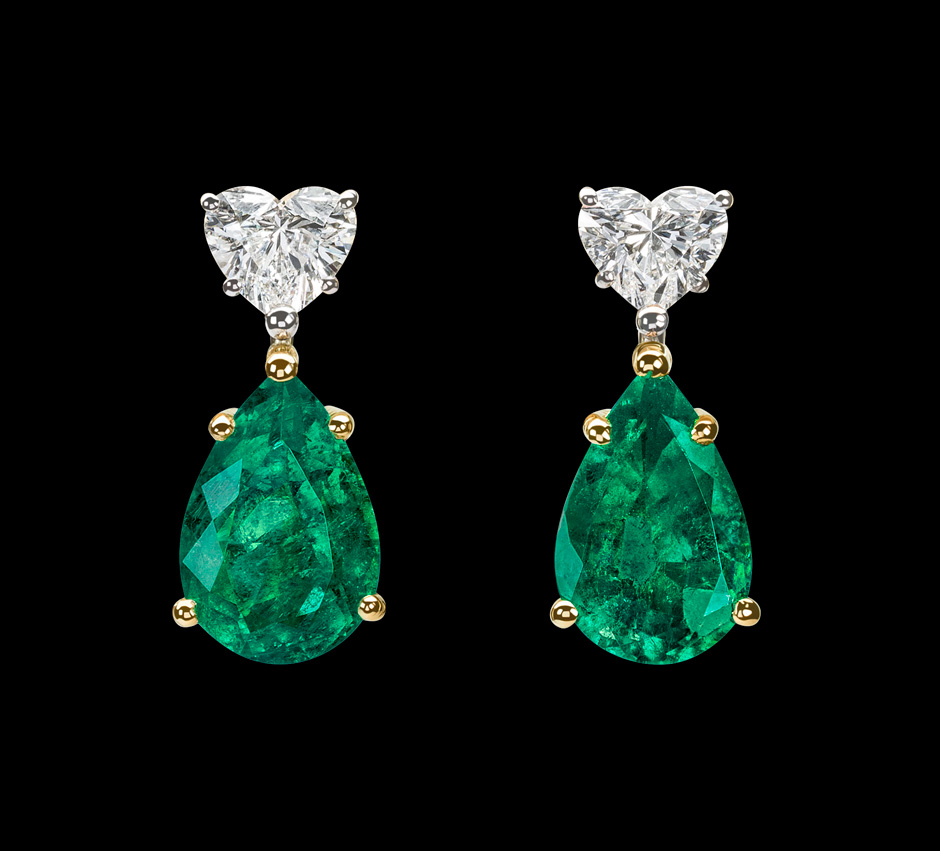Beliefs
Derived from the ancient Greek word for green, “smaragdus”, legends had it that emerald endowed the wearer the power to foresee the future when placed under the tongue. Wearing an emerald was believed to reveal the truth or falseness of a lover’s oath, protect against evil spells and cure diseases such as cholera and malaria.
In color psychology, the color green is believed to relieve stress and eye strain, therefore, lapidarist would look at the stone to ease their eyes.
History
Known as the most famous member of the beryl family, Egypt had the first emerald mines dating from at least 330 BC. Indeed, Cleopatra is known to have fancied the gemstone, using it in her royal adornments.
Praised as the finest emeralds in the world, Colombian Muzo emeralds are prominent for their intense and striking bluish-green color. From the Inca empire to the Spanish conquest and European royalty, these staggering gemstones have, over centuries, become the most desired and fought-over treasures in history.
Located in the steamy jungles of the Andes mountain range in Bogota, the town of Muzo houses a tribe known as the “emerald people”, who carefully, by hand, extract these rich green gemstones which have enriched the heart of their mine.



Color
With Mohs hardness of 7.5 to 8, the most valuable emerald is colored bluish-green to pure green like a Colombian Muzo emerald. An even color distribution with no eye-visible color zoning and high transparency is a great factor in the value of the gemstone
Chromium, vanadium, and iron are the traced chemical elements that cause the emerald’s color and their relative amounts impact the color of the stone. The color is also associated with its mine location. Colombian emeralds have a warmer and more intense pure green color, while the emeralds of Zambia have a cooler and more bluish-green color.
Clarity
Emeralds typically contain inclusions visible to the naked eye, even those of high quality. Described as moss-looking and garden-like, often called “jardin” which is French for garden, inclusions impact the gemstone’s transparency and clarity and thereof its value.
Carat
Emeralds come in a wide range of sizes. There are emeralds in museums and private collections that weigh hundreds of carats while there are small emeralds that weigh fractions of a carat like the Sandawana emeralds of Zimbabwe known for their cut stones of an average of 0.05 to 0.25 carat.
Lavish center stones tend to weigh about 1 to 5 carats, while prestigious pieces of jewelry can carry emeralds that are over 20 carats.
Cut
It is the skill of the lapidarist to consider the rough emerald’s depth of color, durability, and inclusions before deciding on the cuts. Features that make an emerald difficult to cut are its fractures and brittleness which the lapidarist considers. In addition, since the color of the emerald plays an important role in its value, the chosen cut should maximize the effect of its hue, tone, and saturation which is adjusted through proportions and facets.
Emeralds of Alaghband
At Alaghband we handpick the finest emeralds from around the world to dazzle our jewelry with. We are proud to have lavished the vast majority of our masterpieces with the finest Colombian Muzo emeralds. We are reputed for using a great range of these divine treasures, from a double pair of 20-carat heart & pear-cut emeralds lavishing our earrings to a single 24-carat emerald crowning a magnificent necklace sculpted by the master goldsmiths of Alaghband.
We guarantee the finest quality of gemstones to our customers. Accordingly, certificates from world-renowned gemological laboratories such as GIA, GRS, and Gübelin Gem Lab follow our jewelry. Upon request, Alaghband accepts custom-order based on our customer’s desired gemstone, design, and price range. Do not hesitate to contact our jewelry experts for further assistance.
info@alaghbandjewelry.com
+971501400520












